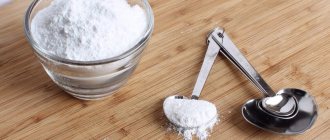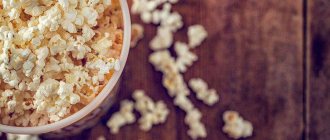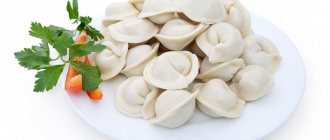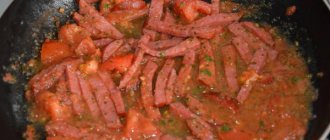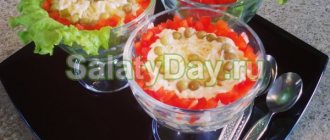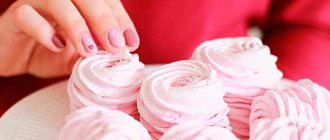Chemical composition and calorie content
The benefits and harms of peanut butter for the human body are determined by the composition of the product and, above all, its calorie content. Its composition (per 100 g) includes an average of 20 carbohydrates, 20 g of protein and 50 g of fat.
Important! Although peanut butter is rich in protein, it lacks the amino acid methionine, making it not recommended as a substitute for meat and other quality proteins.
This chemical composition makes the product suitable for a low-carbohydrate diet. It is also recommended for people with low blood sugar.
Almost 50% of peanut butter forms fat in a ratio of saturated to unsaturated fatty acids similar to olive oil. These fats reduce heart disease and normalize cholesterol in the blood. After using 1 tsp. vegetable paste, you will get about 15 g of fat.
2 tablespoons of nut butter contain up to 8 g of protein and 2-3 g of fiber. It also contains a large amount of vitamins, incl. E and B3, minerals.
The healthy product is quite high in calories: 2 tablespoons = approximately 200 kcal. Therefore, if you are watching your body weight or on a weight loss diet, reduce this portion by half. Also avoid flavored and sweetened types of nut butter - due to the content of a number of additives, a valuable product turns into a tasty, but useless, and sometimes even harmful dessert.
How to burn calories from 100 g of peanut butter
For example, to burn all the calories from 100 grams of peanut butter, you would need 48 minutes of running or 9 hours and 30 minutes of sleep.
>’> >’> >’> >’> >’> >’> >’> >’> >’> >’> >’> >’> >’> >’> >’>
| Activity | Calorie content per day per 100 g | |
| Dream | 9 hours 30 minutes | 40% |
| Meditation | 8 hours 31 minutes | 35% |
| Rest | 7 hours 47 minutes | 32% |
| Reading books, Internet | 6 hours 33 minutes | 27% |
| Sex | 4 h 04 min | 17% |
| Yoga, Pilates | 2 hours 40 minutes | 11% |
| Dancing | 2 hours 31 minutes | 10% |
| Walking | 2 hours 13 minutes | 9% |
| Football | 1 hour 20 minutes | 6% |
| Swimming | 1 hour 17 minutes | 5% |
| Abs workout | 1 h 09 min | 5% |
| Power training | 1 h 09 min | 5% |
| A ride on the bicycle | 1 h 04 min | 4% |
| Jumping rope | 0h 51 min | 4% |
| Run | 0 h 48 min | 3% |
Read also: How to plant daylilies correctly
Calorie content per 100 g and nutritional value of peanuts
Nutritional value of peanuts (100 g):
- kJ – 2450;
- kcal – 580;
- protein – 20 g;
- carbohydrates – 20 g;
- fiber – 9 g;
- fat – 49 g;
- water – 2 g.
Minerals (mg/100 g):
- iron – 3;
- calcium – 50;
- magnesium – 160;
- phosphorus – 370;
- potassium – 650;
- sodium – 6;
- zinc – 3;
- selenium – 0.009;
- copper – 1;
- manganese – 2.5;
- omega-3 – 3.4;
- omega-6 – 15000.
Vitamins (mg/100 g):
- B1 – 0.6;
- B2 – 0.2;
- B3 – 15;
- B5 – 2;
- B6 – 0.4;
- B9 – 0.150;
- E – 8.
Properties of peanut butter
In the absence of allergies, the beneficial properties of peanut butter for women, men and children are beyond doubt. But its consumption should not be exaggerated. Since the product contains healthy vegetable fats, it has a positive effect on the growing body and also slows down aging.
How does peanut butter affect the body - benefits for humans:
- support of digestion, regular bowel movements;
- long-term saturation, constant supply of energy;
- normalization of glycemic levels;
- prevention of vascular and heart diseases;
- normalization of cholesterol levels, blood pressure;
- support muscle growth.
Benefits of peanut butter
Nut butter is very beneficial for the human body. Thanks to the content of healthy fats, a high percentage of protein, fiber, a number of vitamins and minerals, it has a complex effect on the body.
Polyunsaturated fatty acids
The peanut product contains a number of “good” – monounsaturated and polyunsaturated – fats. In 2 tbsp. contains 8 grams of monounsaturated fat and 4 grams of polyunsaturated fat. These fats help lower cholesterol, blood pressure, and reduce the risk of heart disease. They also have an anti-inflammatory effect, which can help in eventual recovery from illness and reduce the risk of metabolic syndrome.
Polyunsaturated fatty acids belong to the omega-6 category. Their deficiency can lead to a number of disorders, including:
- joint pain;
- chest pain;
- PMS;
- tingling in the arms and legs;
- hypertension;
- heart and blood disorders;
- tendency to form tumors;
- indigestion.
Protein
Both the nut itself and nut products are a natural source of protein. Its presence in the diet is a necessary condition for proper cellular function. Protein also plays an important role in protein synthesis, muscle recovery and growth.
2 tbsp. Peanut butter provides about 7-8 g of protein.
Important! A deficient amino acid present in nut butters in insufficient quantities is lysine. Therefore, when using the product as a source of protein, enrich it with 2 eggs or legumes.
Vitamins and minerals
What other components contained in peanut butter make it so beneficial for the body? These are, in particular, the following substances.
- Potassium. If your diet is high in salt, then potassium is a very beneficial ingredient for you. It reduces the negative effects of salt on the cardiovascular system. Potassium also has a positive effect on the nervous system. 1 teaspoon of paste supplies the body with 250 mg of potassium.
- Cellulose. Although peanut butter is not ideal in terms of fiber content, 1 scoop still contains about 1 g of dietary fiber. This substance suppresses hunger and helps with heart disease.
- Tryptophan. It is a component that promotes the formation of serotonin in the body and thus improves mood.
- Niacin. Vitamin B3 (niacin) supports healthy skin, digestive system, and helps lower cholesterol.
- Vitamin B6. This vitamin supports the nervous system.
- Folic acid. Vitamin B9 is beneficial for pregnant women. In addition, the body uses it to produce red blood cells. It is also useful for children, because... together with iron it prevents anemia.
Antioxidants
Vitamin E is one of the most important antioxidants in the human body. This vitamin protects the body from free radicals and helps fight cancer and other diseases of civilization.
Peanut butter is harmful
In addition to beneficial components, peanut butter contains substances that have harmful properties. These are protein structures, lectins. They are difficult to digest and can be toxic.
In other legumes, lectins are destroyed during cooking and are therefore harmless.
When consuming nuts and products made from them, lectins enter the intestines and blood. In addition to minor intestinal inflammation, they can trigger the development of autoimmune diseases such as celiac disease or Crohn's disease.
High calorie content
The main reason why such a healthy product as peanut butter is included in the “black list” of nutritionists is its calorie content. 2 tbsp. Pastas provide up to 10% of daily calorie intake. And that's a lot. By eating a few sandwiches with a tasty addition, you can consume 50% of your daily calorie intake.
Allergenicity of the product
Peanuts are the largest known allergen. And this is a reasonable factor in its harm. If you're not sure if you have a nut allergy, eat (just a little!) for the first time under the supervision of another person. If an adverse reaction occurs, you can count on help.
Poor quality composition
There are 2 types of peanut butter: “smooth” and “crunchy”. As the name suggests, the crunchy product contains coarser pieces of peanuts, while the smooth product contains ground nuts into powder.
Although both products may seem different in terms of composition, they are actually very similar. The differences mainly lie in the additional additives, i.e. sugar, vegetable oil, etc.
Proper, healthy pasta is made only from peanuts. Added salt and sugar affect its mineral composition. Salt increases the sodium content to 150 mg/100 g.
Store-bought peanut butter often contains trans fatty acids. The negative effects of salt and these acids interfere with the positive effects of the nut itself on human health.
Therefore, when purchasing a food product, always check the packaging to see if it contains trans fatty acids. If possible, avoid added sugar.
Possible contraindications
Categorical contraindications when you can’t eat peanut butter:
- allergy;
- obesity.
Conditions where it may pose a health threat (it is advisable to consult a doctor):
- high cholesterol and lipids;
- diabetes.
Vitamins and minerals
Vitamins that are in 100 g. product:
| Vitamins | mg |
| AT 9 | 77.22 mcg |
| AT 5 | 2,14 |
| RR | 12,94 |
| AT 2 | 0,99 |
| IN 1 | 0,87 |
| TO | 0,43 |
| E | 8,34 |
| Kholin | 62,47 |
Peanut butter is rich in minerals. 100 g of peanut mixture contains:
| Macroelements and microelements | mg |
| Potassium | 724 |
| Calcium | 44,72 |
| Iron | 16,93 |
| Magnesium | 384 |
| Sodium | 359 |
| Copper | 2,09 |
| Phosphorus | 314,21 |
| Selenium | 8,23 |
| Zinc | 16,22 |
The nutritional value of peanut mixture is no worse than that of other legumes, peas and beans. Its composition includes a large amount of vegetable protein and vitamin PP, A, group of vitamins B, E. The product contains folic acid, fiber, macro- and microelements.
Peanut mixture contains antioxidants. These are substances that protect cells from the harmful effects of free radicals. Therefore, peanut butter is beneficial for the cardiovascular system. Thanks to the indicator of this substance, the product stands next to strawberries and blackberries. Of course, it cannot be compared with pomegranate.
Peanut butter is very nutritious and rich in nutrients. The ready-to-eat product has the consistency of roasted and crushed peanuts with the addition of a small amount of sugar and salt, as well as vegetable oil. Stabilizers are added to the mass to make its structure more stable.
The product is recommended to be taken for breakfast with pastries and tea. Such a breakfast can add vigor and good mood to a person for the whole day. Peanut butter should be included in the diet unless contraindicated.
Homemade dessert recipe
Now let's look at some useful recipes for making peanut butter. A homemade product is the healthiest, because it contains only high-quality ingredients.
Classic, simple and healthy peanut butter
Ingredients:
- 2 tbsp. peanuts (can be roasted, but do not add salt when roasting);
- ¼-½ tbsp. salt.
Grind the nuts in a blender on low speed. Once it reaches a creamy consistency (about 2-3 minutes), switch to medium speed. Continue mixing until the paste is completely smooth. Add ¼ tsp. salt, stir for 20-30 seconds, add if necessary.
Transfer the resulting product to a suitable container and refrigerate (for 8 hours or overnight) to obtain the traditional consistency.
Nut butter with stevia
Ingredients:
- 4 tbsp. peanuts (can be fried);
- a few teaspoons of stevia;
- ¼ tsp. salt (or less);
- 1 tbsp. coconut oil.
Prepare the paste as in the previous recipe, add stevia and coconut oil along with salt.
Beneficial properties and contraindications of peanut butter, how to take it so as not to cause harm
The leguminous grass, peanuts, is considered a major agricultural crop in the southern states of the United States.
Most of the country's harvest is used to produce peanut butter.
Americans cannot imagine their lives without her. How beneficial is paste for the human body? What is more in it, benefit or harm?
American breakfast
In the century before last, this plant from the legume family was called food for the poor.
Peanuts changed status at the beginning of the twentieth century.
In 1903, the American scientist George Carver came up with over 300 ways to use legumes in:
At the same time, a recipe for cooking peanut butter was invented, and it began its victorious march around the world.
Americans are considered to be fine connoisseurs and adherents of the product:
- every day it is put on the table of 40 million people in the United States.
The typical Yankee's most popular morning meal is a peanut butter and jelly sandwich.
What do you know about the beneficial properties and contraindications of kumiss? You can read which one has greater healing power, from mare’s or goat’s milk, after clicking on the link.
Read about the benefits of tan and ayran on this page.
Depending on the time of grinding peanuts and additives: candied fruits, coconut flakes, nuts (benefits and harm to the body), the paste has a different consistency and taste.
Some types of product are produced without salt and sugar, but the paste always retains its beneficial qualities and increased calorie content.
It is spread on toast and bread, washed down with coffee (the benefits and harms for pregnant women are written here), cocoa, milk or tea.
Chemical composition
The basic component of the paste is peeled, roasted and crushed peanuts, rich in proteins and vitamins.
Vegetable oil is added to it (what harm you can get from palm oil is written in this article), table salt and sugar. Peanut butter usually contains a stabilizer, which gives it a denser structure.
Thanks to cold processing, the paste does not lose the beneficial properties of legumes. The benefits of heat treatment are evidenced by the fact that properly roasted peanuts contain more polyphenols than freshly picked ones.
The high quality product has a uniform consistency with the aroma and taste of roasted peanut kernels.
The composition of the paste and the preparation technology affect its final color, which can be either light brown or thick coffee.
The energy value is 598 kcal per 100 grams. The lion's share comes from fats (455 kcal), followed by proteins (99 kcal), and carbohydrates (41 kcal) close the list.
The paste contains choline, vitamins D, E, K, C, PP and B vitamins (more than 81 mcg per 100 g). There is a high concentration of minerals here (in descending order):
In nutritional value, peanut butter is superior to all legumes, including peas and beans (white calorie content).
What do you know about the use of agar-agar? The advisability of using it for health purposes is described in a useful article.
You can read about the benefits and harms of starch jelly here.
Read also Dishes made from fresh corn
What is the benefit
Healthy food
Peanut proteins replace animal proteins in the diet of vegetarians.
Dietary fiber counteracts constipation by restoring intestinal motility. This is also important for those who monitor their physical fitness and do not want to gain extra pounds.
Therapy and prevention
The paste has a wide range of healing capabilities. It strengthens the immune system, thanks to zinc, and fights sclerosis, relying on the help of linoleic acid, which lowers the threshold of bad cholesterol.
What other healing powers are hidden in peanut butter?
- It regulates the activity of the cardiovascular system.
- It stimulates bile formation and bile secretion, prevents inflammation of the gallbladder (read how to properly make a tube here).
- Regenerates liver cells and prevents fat deposits.
Thanks to these properties, peanut mixture is indicated for the prevention and treatment of:
- cholelithiasis,
- biliary dyskinesia,
- hepatitis A,
- fatty liver infiltration,
- cirrhosis.
Regular use of the paste allows you to:
- reduce the risk of diabetes (medicinal properties of yellow clover);
- improve metabolism and normalize blood pressure (due to iron);
- improve memory and put in order “shaky” nerves.
Antioxidants, the number of which the product is comparable to blackberries and raspberries, protect the body from free radicals.
Vitamin D monitors the proper formation of the skeleton and bone tissue, ascorbic acid maintains the elasticity and strength of cartilage.
For women's health
Women include peanut mass in their daily menu because of the antioxidants that keep their face and body youthful.
Folic acid is responsible for cell renewal and growth. This element is also vital for future parents, as it protects the fetus from birth defects.
It is believed that the paste helps cope with infertility and stabilizes hormonal balance.
Diet food
Losing weight with peanut butter is carried out under the supervision of a nutritionist: only he knows what it is combined with and how not to overdo the dose.
When following such a diet, you are not tormented by hunger, since the body is saturated with nutrients in optimal quantities: the weight melts slowly and without jumps.
If you follow the nutritionist's instructions, excess weight will leave you forever.
A little about the harm
The calorie content of a product is considered both its advantage and disadvantage:
- with excessive consumption, you will not lose weight, but gain excess weight.
Doctors have determined the daily intake of peanut butter:
- no more than 30 grams (one tablespoon).
Peanut butter also has more serious contraindications:
Methods of application
It becomes one of the ingredients when baking muffins and cookies. When added to risotto, sauces and creams, pasta imparts its specific flavor to them.
But this product is used not only for its intended purpose (for gastronomic purposes), but paradoxical areas of application are found for it, for example, cleaning clothes and shoes.
The paste helps get rid of chewing gum stuck to things. Try, armed with a jar of paste, to add shine to your old leather shoes.
Apply it to the surface in the same way as shoe polish, rub in, and then polish with an old terry towel.
They claim that peanut butter can replace shaving foam if the latter suddenly runs out.
Take the liberty to experiment in the kitchen:
This way you will kill two birds with one stone:
- the fish will acquire an interesting taste and will not stick to the pan.
Peanut mass is useful for restorative masks , which are prepared by lovers of cosmetic procedures at home (useful properties of sesame for women). This anti-aging therapy will smooth out wrinkles and nourish the epidermis.
How to store
The peanut mass is kept in a hermetically sealed jar. There are two storage options.
The jar is stored at room temperature:
the nutritional value in this case remains the same.
The paste does not lose its elasticity, it is convenient to take out and spread. Second.
Peanut paste is placed in the refrigerator at a temperature of at least + 8 degrees.
The product is stored in the refrigerator for 60 days.
The taste and calorie content of the paste are preserved during this time.
How peanut butter is beneficial and how it is harmful to the human body, watch the video of the program #171;Live Healthy!#187;.
Did you like the article? Subscribe to site updates via RSS, or follow updates on VKontakte, Odnoklassniki, Facebook, Twitter or Google Plus.
The calorie content of peanut butter per 100 grams (using the example of Nutella products) is 530 kcal. In 100 g of product:
- 6.8 g protein;
- 31 g fat;
- 56 g carbohydrates.
The composition of peanut butter is represented by sugar, vegetable oil, cocoa powder with a reduced fat concentration, hazelnut kernels, skim milk, and whey. The product is characterized by an increase in the content of vitamins B, A, D, minerals calcium, phosphorus, magnesium, chlorine, potassium, sulfur.
How to eat peanut butter
It is ideal to start a new day with a healthy nut product - it will be an excellent part of both sweet and salty breakfast, it will provide the body with carbohydrates and protein, activate the metabolism, and fill you up for a long time.
If you're going to a sports practice, also treat yourself to a healthy treat. It is suitable not only for “jocks”, but also for runners - increased consumption of proteins and minerals is necessary for all sports.
For athletes
What are the benefits of peanut butter for athletes, how to consume a healthy product? It is widely used in sports nutrition because... helps build muscle mass and increases the endurance of athletes. We are talking about a source of healthy fats, an alternative to animal sources of fat. You don't have to eat a kilogram of pasta in a week. 2-4 tsp is enough. in a day.
Pregnant
Eating nut products during pregnancy is a controversial issue. According to some experts, in the absence of allergies, we are talking about suitable foods while bearing a child. Nuts provide support for the proper development of the fetus and support the health of the expectant mother. But if adverse reactions of the body appear after consuming them, a stop is required - exclusion of nuts from the diet and consultation with a doctor.
Important! Consumption of nuts and products made from them during pregnancy (up to 4 tsp per day) by women who are not allergic to them can subsequently prevent allergic reactions in children.
When breastfeeding
Protein from peanuts passes into breast milk. But this does not mean there is a risk of allergies in the child. A study published in the Journal of Allergy and Clinical Immunology in 2008 found that in Israel, where nuts are a common part of the diet of breastfeeding mothers and children from 8 months of age, there were lower rates of nut allergies than their British counterparts. peers.
Start using ½-1 tsp, watch your and your child’s body’s reaction.
What are the benefits and harms of peanut butter?
Peanut paste
Composition of the product
Vitamin
The vitamin composition of peanut treats is represented by the following components:
Minerals
The product boasts a range of different minerals:
Nutritional value and calorie content
The nutritional value of the product is represented by the following composition:
- teaspoon 12 g - 72 kcal;
- tablespoon - 210 kcal.
What are the benefits of peanut butter
Peanut delicacy is considered a balanced source of the most valuable components for human health.
Can I use it?
Peanuts are a strong allergen that can provoke severe allergic reactions, so people with allergies will have to avoid them.
Pregnant
Consumption of groundnut paste by pregnant women should be reduced to a minimum or eliminated altogether, as its potential harm may outweigh the beneficial effects. Among the risk factors, doctors identify:
Read also: Adenium obesum indoor plants
Nursing
For children
Features of application and specific benefits
Groundnut paste is considered one of the important elements of a healthy diet. Surprisingly, with a fairly high calorie content, it is widely used in diets and sports nutrition.
For those who want to lose weight
For athletes
How to eat peanut butter
Like any other product, peanut butter requires moderation in consumption and compliance with the daily intake.
Product selection rules
You can get the maximum benefit from the paste only if it is of high quality, fresh, natural, with a minimum content of chemical additives.
When choosing a treat, you should pay attention to the following aspects:
- composition - a good paste consists of only two components - peanuts and salt. Adding sugar or other sweeteners is also acceptable;
- color - the fresh product has a light brown or dark brown uniform color, has a glossy, shiny structure;
- smell - a predominantly tasty, nutty, slightly sweet smell;
- amount of fat - the “reduced” fat content in pasta should be alarming, since manufacturers often replace it with trans fats or sugar. This “marketing ploy” does not reduce the calorie content of the product, but makes it less healthy.
What goes with it?
Classically, peanut butter has always been paired with wheat bread. This is how most of the world's population eats breakfast. However, there are other options for “eating” this delicacy that are safer for your figure:
Are there standards?
Nutritionists agreed that two tablespoons of pasta per day for a healthy person is enough to replenish the daily norm of valuable substances necessary for life. Moreover, it is recommended to consume the product in the first half of the day. For people who want to lose weight, the daily intake is no more than 1 teaspoon.
Storage rules
How to make delicious peanut butter: step-by-step recipe with photos
If you doubt the quality and naturalness of the peanut butter offered in stores, then you can prepare the treat yourself.
Required Ingredients
- peanuts (raw or roasted) - 300 g;
- honey - 1 tsp;
- salt - a small pinch;
- vegetable oil - 1 tsp.
Step by step recipe
This recipe makes the paste sweet and uses honey as a sweetener.
Preparation of the product includes several stages:
Possible harm and contraindications
What else besides pasta
Peanuts and products made from them are popular among residents of many countries. It not only has a pleasant taste and aroma, but also serves as a source of vitamins, micro- and macroelements.
Dried peanuts
Roasted peanuts
Peanut halva
Peanut butter
Related news
Read more
You spoke so deliciously about coffee. but I can’t afford either one or the other because of the caffeine and cholesterol. .
Do you even understand what the width of a semicircle is? The size of a penis is considered to be half.
I took Baby Formula for my 6-year-old daughter, it’s a vitamin and mineral complex. It also contains the necessary vitamins.
Just a great album. We also decided to do this, we are just learning. Where do you buy the material? Us .
- Lifegid.com
- Confidentiality
The use of any materials posted on the site is permitted provided there is a link to lifegid.com
The editors of the portal may not share the opinion of the author and are not responsible for copyright materials, for the accuracy and content of advertising

